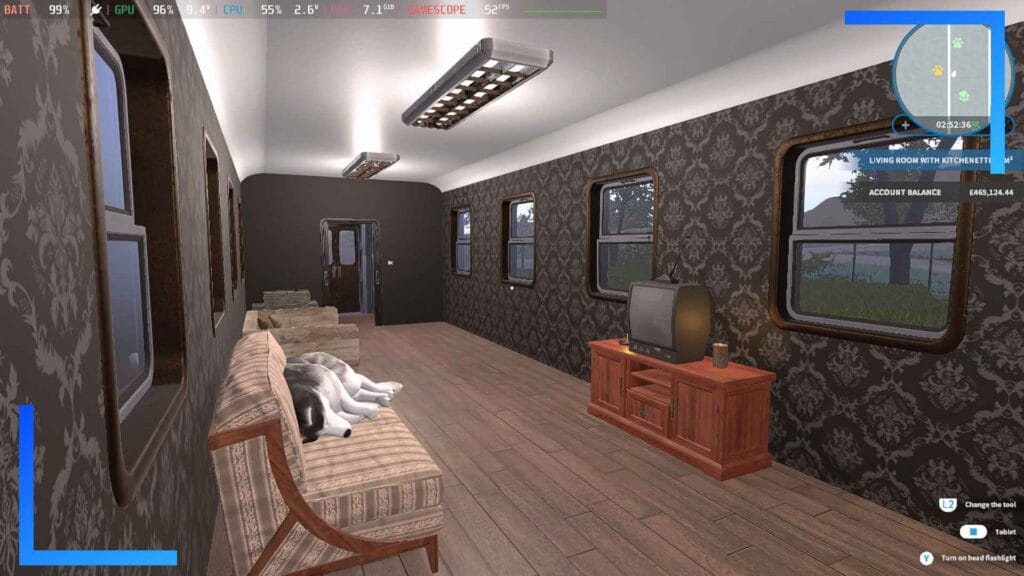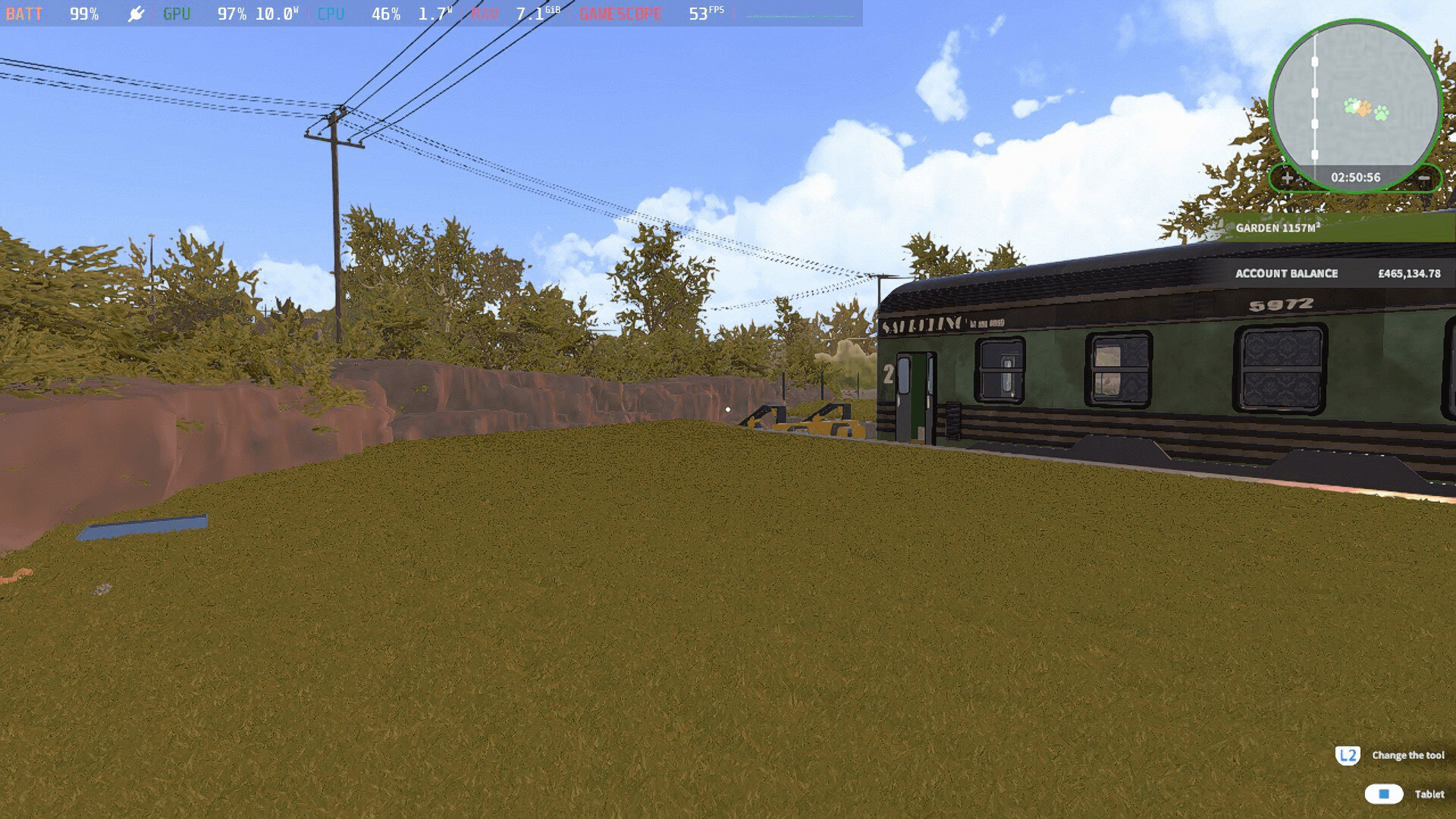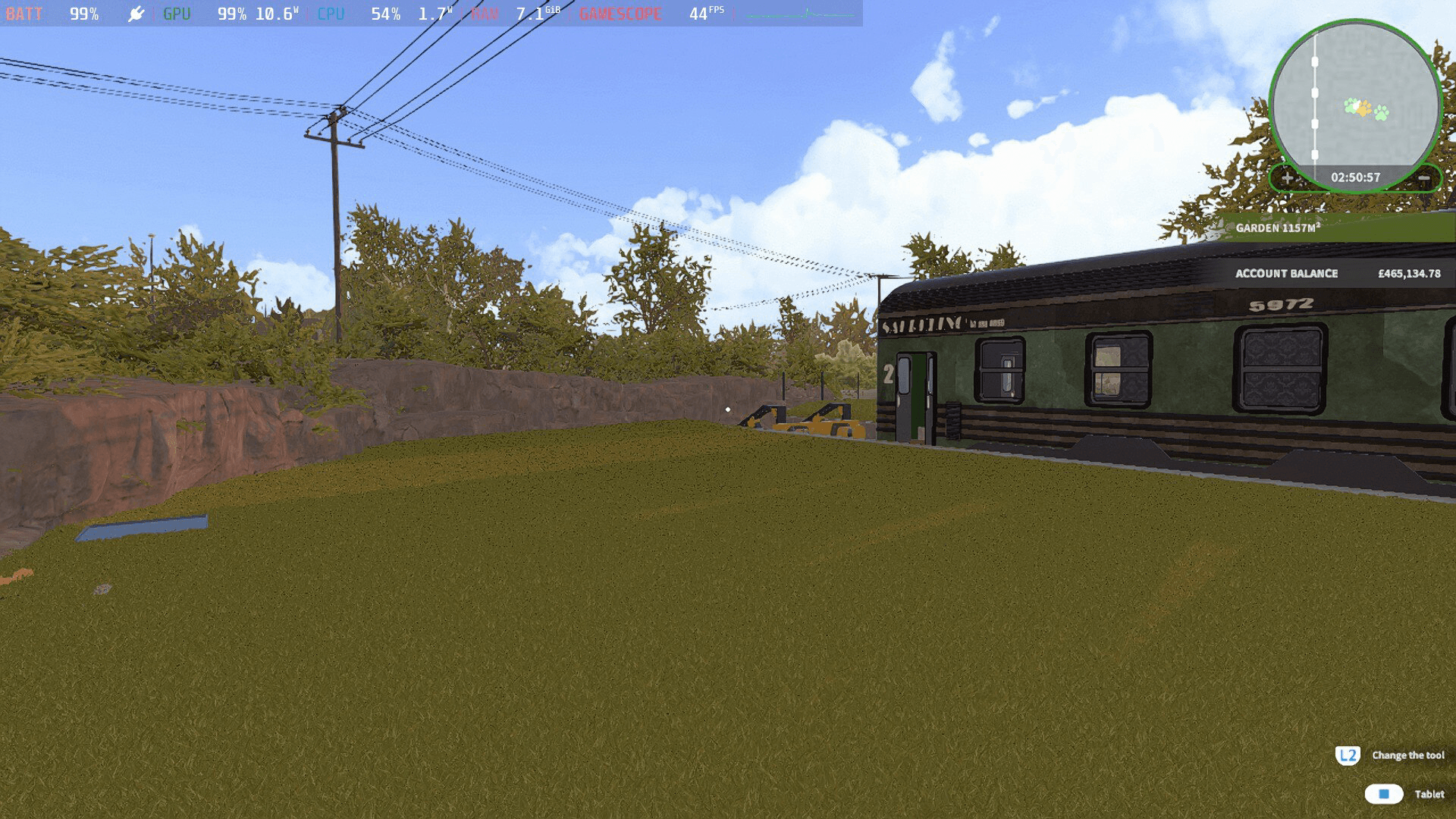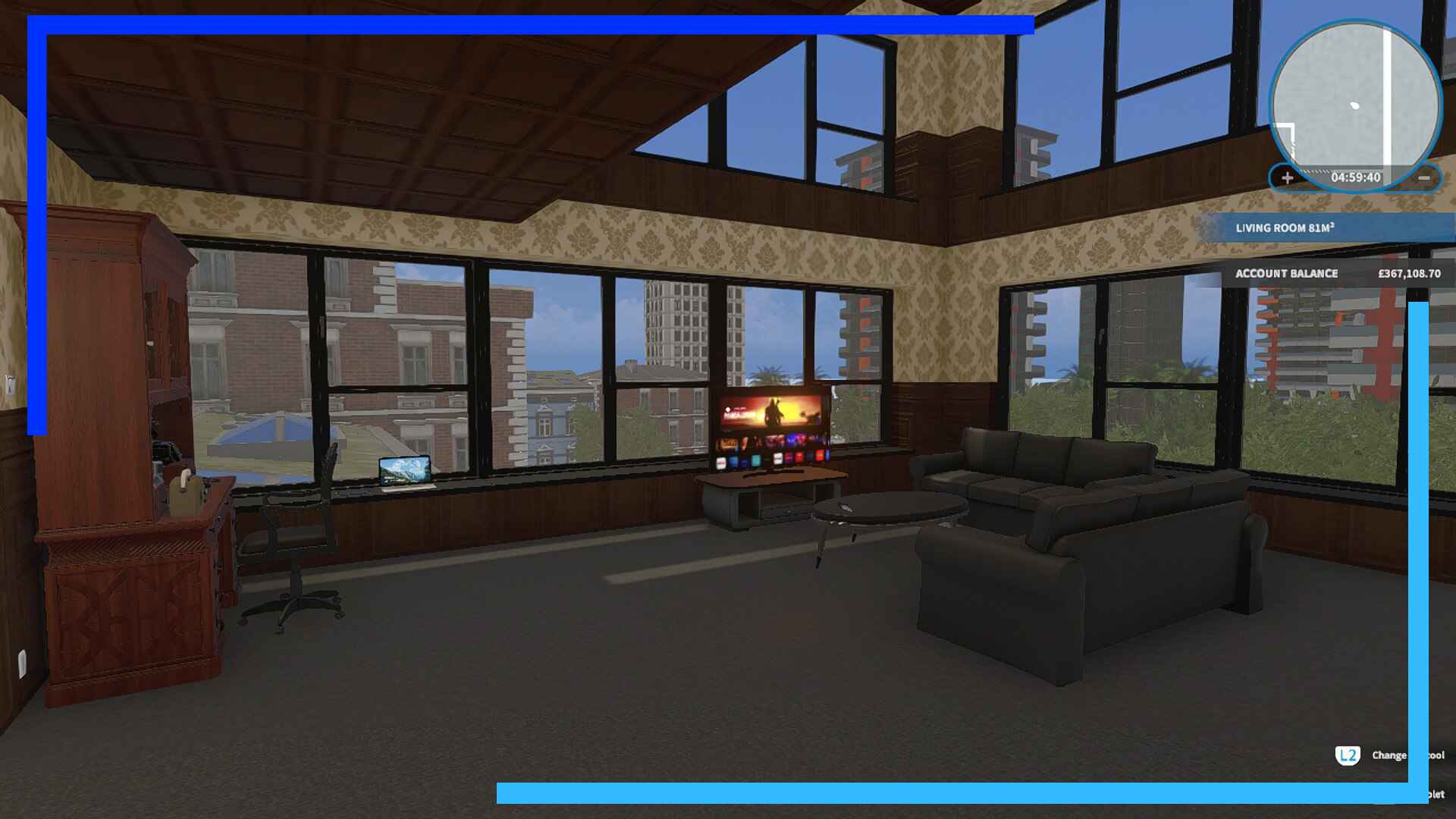Performance Overview
The single best thing about House Flipper on Steam Deck is that it works with minimal fuss. The out-of-the-box settings are enough to get by on, especially in handheld mode. There are gains to be made in handheld, sure, but the main tweaking is only really needed when switching to docked mode.
In terms of frames, expected in the region of 45 to 60 on the whole. There are drops when moving around outside of a home, and downloadable content packs require a little more tinkering, but on the whole, House Flipper comes easy to recommend on Steam Deck.
House Flipper Overview
After a more hands-on version of The Sims? That’s the hook of House Flipper. Rather than taking a top-down, overlooking viewpoint, House Flipper switches things up with a first-person perspective.
Players start with odd jobs before moving on to more advanced tasks, namely buying and flipping a house.
It’s all about renovation: Fix up a dilapidated house, design a room, pack it with lush furniture, and sell it on for maximum profit.
It’s a simple concept for sure, but the level of depth House Flipper offers makes it not just a solid alternative to The Sims, but some would argue it’s an improvement of the formula.
House Flipper on Steam Deck Settings
The Steam Deck settings below aim to target 45 to 60 frames per second. For most of the time, House Flipper will hit that target without much hassle. There will be regular dips – never lower than 30 – but they’re manageable for the most part.
One area that’s worth toying with is the ECO lighting system. This option denotes whether lights stay on or off during gameplay. With it off, lights will always stay on regardless of where you are in-game. If it’s on, however, lights will only turn on upon entering a room.

Turning the ECO lighting option on will have a slight impact on frames. During my testing, it’s a gain of around three to five frames. If you’re looking to get House Flipper as smooth as possible, definitely consider turning this option on.
Likewise, if you’re happy to play at 30 frames per second, it’s possible to switch quality to high. Again, you’ll notice more lost frames, but it’s still perfectly playable.
TDP is also a sticking point for me. At eight TDP, the fan is super quiet, but there are occasional stutters, mostly when the auto-save function kicks in. At 10 TDP, this isn’t anywhere near as much of an issue, but you will hear the fan whirring. At the full 15 TDP you will get the smoothest experience, but the fan becomes bothersome, hence why dropping it down to nine or 10 is recommended here.
| House Flipper Settings (In-game Settings) | |
| ECO Lighting System: Off | Display Mode: Exclusive Fullscreen |
| Advanced ECO Environment System: Off | Resolution: 1280×800 |
| Quality: Good | Vertical Synchronisation: On |
| Effects: Medium | Ambient Occlusion: Off |
| Shadows Quality: Medium | Bloom: Off |
| Texture Quality: Full | Motion Blur: Off |
| Anti-Aliasing: Extreme Performance | Depth of Field: Off |
| Screen Space Reflection: Extreme Perfromance | Wall Destruction Effects: None |
| Fog: Off | |
| Steam Deck Settings (Quick Access Menu) | |
| TDP: 9 (45-60 frames) | Estimated Battery Life: 120 minutes |
| Docked Mode Resolution: 1280×720 | FSR: On (Docked Mode) |
| GPU Usage: 89-91% | Temperature: 63 degrees |
| Overall Rating: 3/5 | |
Bugs and Issues
House Flipper is currently in a great state. Bugs are few and far between. During my playtime I only suffered two crashes, both of which were from a specific window I tried to place. Outside of that, bugs and glitches aren’t significant factors. There are minor kinks here and there, but the game is fully playable and, more importantly, enjoyable on Steam Deck.
The biggest hurdle to overcome is the framerate. In the base game, 45 to 60 is mostly achievable indoors. But step outside and frames will drop. Normally this is a quick blip from 45 to 30 then back again, so it’s not the end of the world, but it’s worth noting.


House Flipper Low vs Good Settings
Where things do become more troublesome is once you start installing downloadable content. Adding pets, for example, puts more pressure on the Steam Deck. Instead of just the player in a technically lifeless world with few moving parts, now the Deck has to put up with multiple animals roaming.
As with stepping outside, its dips down into the 30s that’s the most noticeable. I found it doesn’t hinder the experience, and I thoroughly enjoyed my time reviewing House Flipper. But if you’re after a fully-smooth 60 frames per second, you won’t find that here.
In House Flipper’s defense, there’s a lot going on at any given moment. Being able to smash walls to bits, or change their color in a split-second is astounding from a tech perspective, so the lost frames are a manageable trade-off for what the game is capable of on the Steam Deck.
Final Thoughts
When it comes to performance, House Flipper on Steam Deck isn’t perfect by any stretch, but that’s totally fine. What you have here is a portable home renovation game that runs great and doesn’t dumb the experience down to fit it on the Steam Deck. The game is fully playable, and minor frame dips aside, is a chill, satisfying experience.
If you’re after Sims on the go, House Flipper is a unique blend of creativity and relaxation that’s sure to keep you entertained.

Disclosure: Review copy purchased online. | All screenshots captured on Steam Deck.| To learn more about our review policy click here. | Alternatively, click here to find out why you can trust me.

